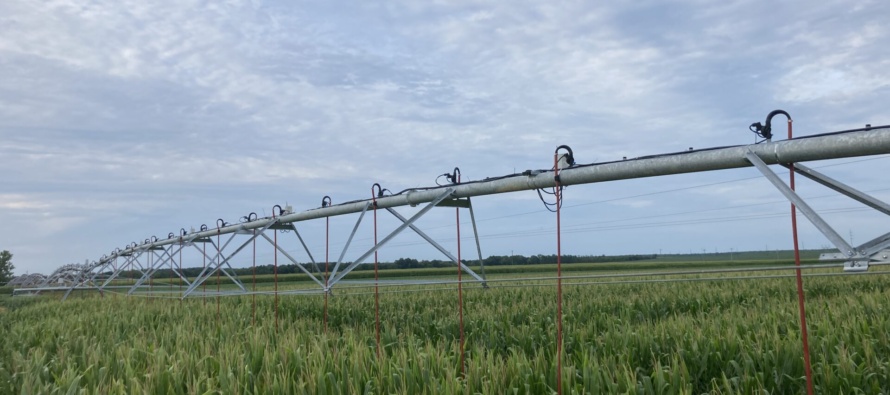Where to Install Soil Moisture Sensors for Pivot Irrigation

Related Articles
- 2010 Row Crop Short Course Video Links 0
- Key Corn Verification Findings 1
- What to Expect from Later than Normal Corn Planting 2
Latest Tweets
Small plot and on-farm research in Mississippi have shown that using soil moisture sensors to schedule irrigations can reduce water applied while maintaining or improving yield and profitability relative to other methods. However, placement and installation affect the accuracy of the soil moisture estimate from the sensors. Placement considerations are different in pivot-irrigated fields compared to furrow-irrigated fields. This publication describes where to install soil moisture sensors in pivot-irrigated environments.
Location within a Field
Consider 4 primary factors when determining where to install soil moisture sensors at the field scale.
- Place the sensors in a representative, high yield area. To maximize yield, the soil moisture sensors should monitor the soil water in an area with the greatest yield potential. In other words, placing the sensors in an underperforming part of the field will not accurately estimate water use for areas with higher yield potential.
- Install sensors under the next-to-last pivot span. The outer spans cover the most area and have the greatest application rate, i.e., the most potential for runoff/poor infiltration. Thus, by placing the sensors under the next-to-last span, we are monitoring most of the acres which are also likely the driest.
- Avoid placing the sensors in a low spot or at the foot of a slope. These locations are likely to remain wetter, which would overestimate the amount of water available to your crop.
- Locate the sensors at the end of the pivot spin. The sensors should monitor the driest part of the field. It can take several days to complete a spin; thus, soil water can vary substantially from the beginning to the end of the irrigation. When the sensors are in the portion irrigated last, the rest of the field can be safely assumed to have more water than the sensors indicate.
Location at the Sub-Field Scale
At the sub-field scale, the following factors can influence sensor performance.
- Install sensors adjacent to a uniform, healthy crop stand. Placing the sensors next to skips or stunted plants will overestimate the amount of water available to the crop.
- Uniformly distance sensors from the crop row. If using multiple sensors in a set, such as the Irrometer Watermark 200SS granular matrix sensors commonly recommended by MSU Extension, each sensor should be placed parallel to the crop row spaced approximately 6 to 8 inches apart.
- If the crop is planted on raised seedbeds, install sensors on top of the raised seedbeds, about 8 to 10 inches from the row.
- Avoid placing sensors adjacent to a row that equipment travels down. Equipment traffic increases the chance of damage to the sensors and can decrease infiltration, which will inaccurately estimate the effectiveness of a rainfall event or irrigation.




Let me tell You a sad story ! There are no comments yet, but You can be first one to comment this article.
Write a comment